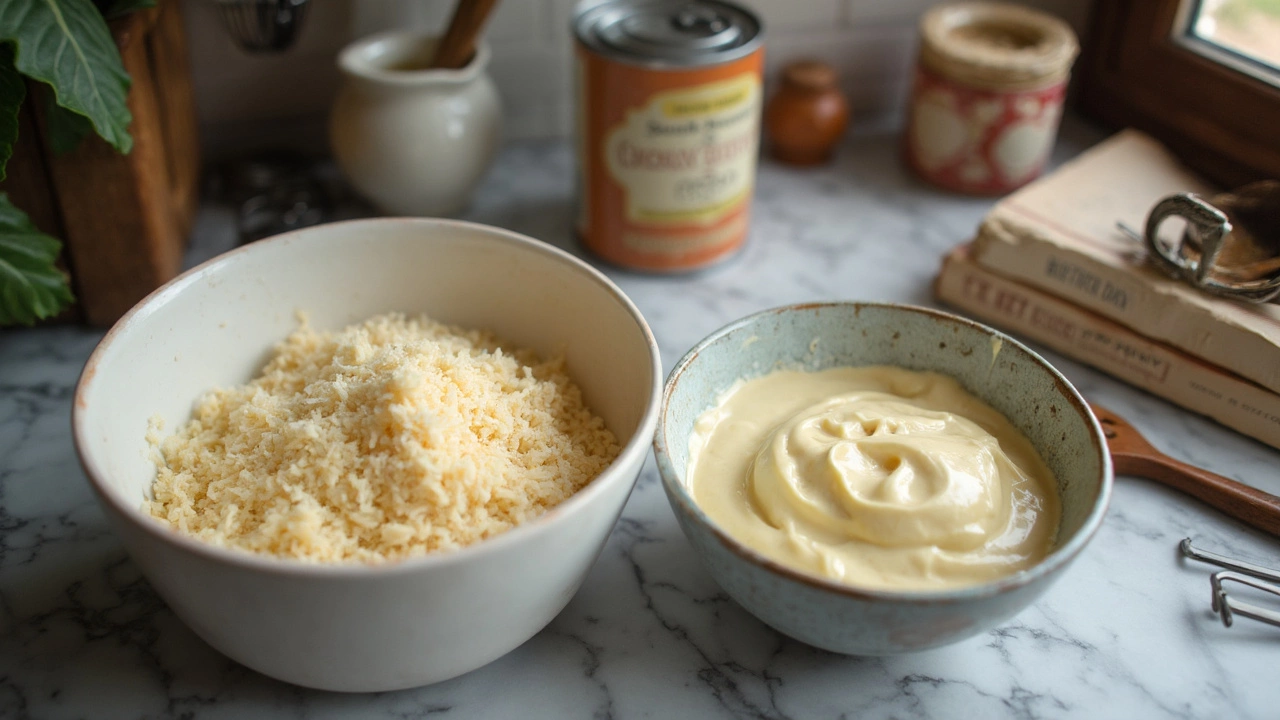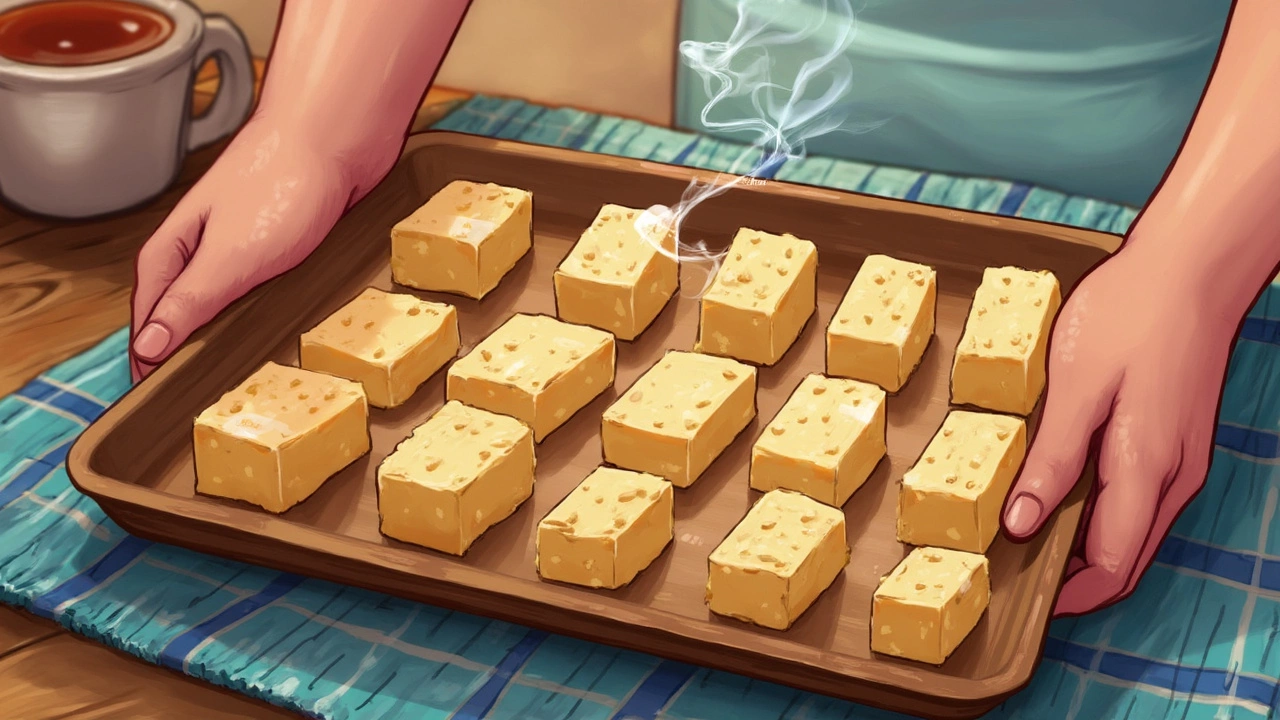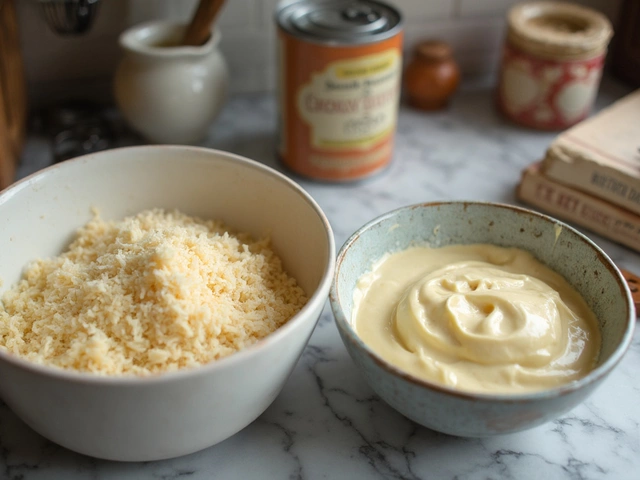
Stuck craving homemade fudge but only have a can of cream of coconut sitting in your pantry? You’re not alone. Lots of us hit that moment—mixing bowl in hand—when we realize the recipe calls for sweetened condensed milk, and the only sweet, canned dairy nearby is something totally tropical.
The big question: can cream of coconut really fill in for sweetened condensed milk when making fudge? Well, yes—sort of. The swap isn’t perfect, but it can totally work if you know what to expect and make a few tweaks.
First thing you need to know is they’re cousins—both are thick, sweet, and usually come in cans, but they’re not twins. Cream of coconut is made from coconut and sugar, while sweetened condensed milk is thick cow’s milk with sugar. They’re both sticky and sweet, but their flavor and fat content are pretty different—which means your fudge will come out a little different, too.
- Cream of Coconut vs. Sweetened Condensed Milk: What’s the Difference?
- How Cream of Coconut Works in Fudge Recipes
- Adjustments and Tips for Coconut-Based Fudge
- Flavor Ideas and Creative Twists
Cream of Coconut vs. Sweetened Condensed Milk: What’s the Difference?
If you’ve ever peered into your pantry and spotted both cream of coconut and sweetened condensed milk, you might think they’re pretty much the same. They both come in cans, look thick and glossy, and are super sweet. But there are some important differences that show up in fudge.
Sweetened condensed milk is made from cow’s milk and sugar boiled down until it’s thick and syrupy. It’s creamy, rich, and super smooth. It gives classic fudge that dense, milky base people love. It’s got about 8 grams of fat per 2 tablespoons and has a mellow sweetness that lets other flavors shine through.
Cream of coconut is a blend of coconut meat, water, and sugar. This isn’t the same as coconut milk or coconut cream you’d pour into curries—it’s way sweeter and thicker. Think “piña colada in a can.” It usually comes with a whopping 10-12 grams of fat per 2 tablespoons. And the coconut flavor is front and center—it’ll change the way your fudge tastes, and can sometimes make it a bit softer.
| Ingredient | Main Base | Fat (per 2 tbsp) | Sweetness | Main Flavor |
|---|---|---|---|---|
| Sweetened Condensed Milk | Cow's milk & sugar | 8g | Milky, subtle | Creamy, neutral |
| Cream of Coconut | Coconut & sugar | 10-12g | High, very sweet | Strong coconut |
If you use cream of coconut in your fudge, expect more coconut taste in every bite and a slightly different texture. You’ll also be using something that’s naturally dairy-free, which is huge for folks with lactose intolerance or anyone who’s avoiding dairy.
So, while these two have similar roles—adding sweetness, fat, and thickness—they bring totally different vibes to a recipe. Your choice will change the end result, both in taste and texture. Next up: let’s see how this swap plays out in an actual fudge recipe.
How Cream of Coconut Works in Fudge Recipes
Swapping cream of coconut for sweetened condensed milk in fudge changes a few things, but it doesn't make fudge off-limits when you're missing the usual can. Cream of coconut packs in lots of sugar and a rich coconut taste, making it sweeter than you might expect. It's also dairy-free, which is a bonus for folks avoiding milk.
The texture will shift, though. Cream of coconut is a little runnier and fattier than sweetened condensed milk, so your fudge might be softer or slightly oily if you use it straight up. It's packed with coconut oil, which sets differently than dairy fat when cooled. To help your fudge set firm, you'll want to chill it longer—sometimes overnight—and maybe even reduce other liquids in your recipe.
Here's the real kicker: while sweetened condensed milk is neutral and lets other flavors shine, cream of coconut brings a coconut punch. Your fudge will taste like coconut no matter what flavor you’re shooting for. Some people dig that tropical vibe, but if you’re not a coconut fan, this might not be your jam.
- Measure 1:1—use the same amount of cream of coconut as sweetened condensed milk in most recipes.
- If your fudge turns out too soft, toss it in the freezer for 30 minutes before cutting.
- Cream of coconut brands vary—some are thicker (like Coco Lopez), some are runnier. Give it a good stir or even chill it before using, so it's not separated.
There’s a little science behind this. One study in 2023 found that fudge made with cream of coconut had up to 15% more fat and set looser at room temp compared to classic recipes. But most home bakers agreed it still felt special, just a bit more snack-bar than old-school fudge block.

Adjustments and Tips for Coconut-Based Fudge
If you want to swap cream of coconut for sweetened condensed milk in your fudge recipe, you'll need to consider a few things right away: texture, sweetness, and how your fudge sets. Coconut-based fudge can turn out a bit softer and less stable if you use the same amount you'd use for sweetened condensed milk, because cream of coconut has a little more water.
The easiest fix? Boil the cream of coconut gently for about 5–7 minutes before you use it. This helps cook off some of the extra water, giving you a thicker, more syrupy base, a lot like condensed milk. Just watch it closely and stir often so it doesn’t scorch.
Here’s a simple checklist if you’re working with cream of coconut:
- Pick a good brand—Coco Lopez and Goya are popular and work great for fudge. Some coconut creams are way runnier, and those will make a mess of your recipe.
- Aim for a 1:1 swap by volume, but start with less and add more if your mixture looks too dry.
- Dial back any extra sugar in your recipe. Cream of coconut comes loaded with sugar already—probably more than your typical can of condensed milk.
- Let your fudge mixture cook a bit longer and let it cool all the way down. It usually takes a little more time to firm up than regular fudge.
- Don’t panic if it’s a little softer—even commercial marshmallow fudge recipes come out more like fudge “squares” than bricks.
Coconut also changes the flavor profile quite a bit. You’ll get that beachy, tropical flavor front and center—so pair it up with flavors that actually make sense, like dark chocolate, almonds, or lime zest. If you want less coconut taste, add a pinch of salt and a splash of vanilla. They help balance things out.
There’s also a bonus: using cream of coconut in fudge means your recipe can be dairy-free and even vegan if you use the right chocolate. That’s a game changer for friends who can’t do dairy.
Take a look at this practical quick-compare on sweetness so you’re not caught off guard:
| Ingredient | Sugar per 2 oz (grams) |
|---|---|
| Cream of Coconut | ~22 g |
| Sweetened Condensed Milk | ~19 g |
Bottom line: watch for extra water, check your sweetness, and don’t be afraid to let the coconut flavor shine. Most fudge fans love a new twist now and then!
Flavor Ideas and Creative Twists
When you use cream of coconut instead of sweetened condensed milk in fudge, you’re opening the door to lots of fun flavor combos. The coconut flavor is definitely front and center, so it makes sense to play that up instead of trying to hide it.
If you’re experimenting at home, here are a few ideas to get you started:
- Classic Coconut-Chocolate Fudge: Toss in shredded coconut, use dark or semi-sweet chocolate chips, and suddenly you’ve got a fudge that tastes a little like a candy bar.
- Tropical Fudge: For an island vibe, stir in dried pineapple bits or chopped dried mango. Add a pinch of lime zest for a burst of fresh flavor.
- Nutty Coconut Fudge: Chopped almonds, cashews, or macadamia nuts give extra texture. Toast them first for a deeper flavor.
- Dairy-Free Fudge: People who can’t do dairy can enjoy fudge again. Use vegan chocolate chips or any dark chocolate that’s milk-free, and you’ve got a solid dairy-free treat.
- Spiced Coconut Fudge: Add ground ginger, cardamom, or a hint of cinnamon for a bit of warmth and depth that goes surprisingly well with the sweet coconut.
If you’re curious how much protein, fat, and calories you’re swapping, check out this quick glance:
| Ingredient (per 2 tbsp) | Calories | Fat (g) | Sugar (g) | Protein (g) |
|---|---|---|---|---|
| Sweetened Condensed Milk | 130 | 3 | 22 | 3 |
| Cream of Coconut | 120 | 6 | 16 | 0 |
One thing to remember—cream of coconut is runnier and much sweeter than sweetened condensed milk. You might need to use less sugar in your recipe, or add a little shredded coconut or extra chocolate to get the right texture. If you’re into experimenting, try cutting back on any added sweetener by a tablespoon or two and see how it turns out.
People who love fudge recipes with a unique twist actually praise using cream of coconut for the way it brings out chocolate’s richness and makes the fudge softer. And if you want your coconut fudge to really pop, sprinkle some flaky sea salt or toasted coconut on top just before it sets.










Write a comment